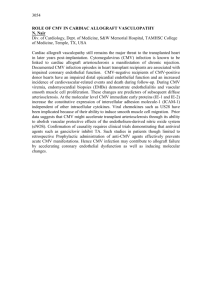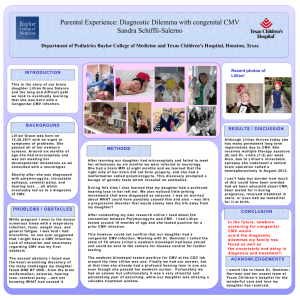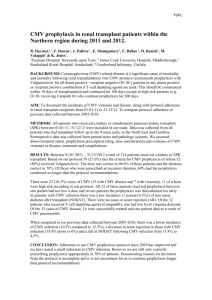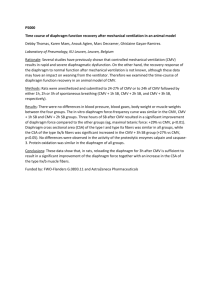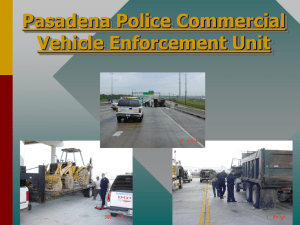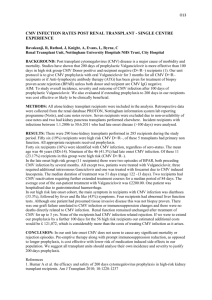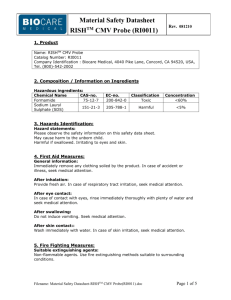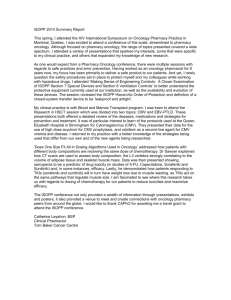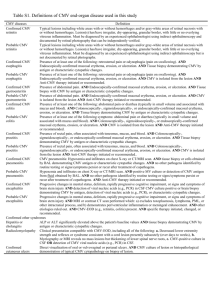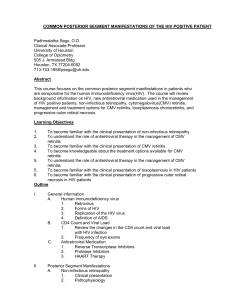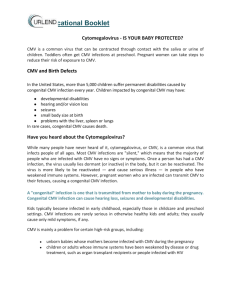Increased Graft Failure and Mortality Following Cytomegalovirus
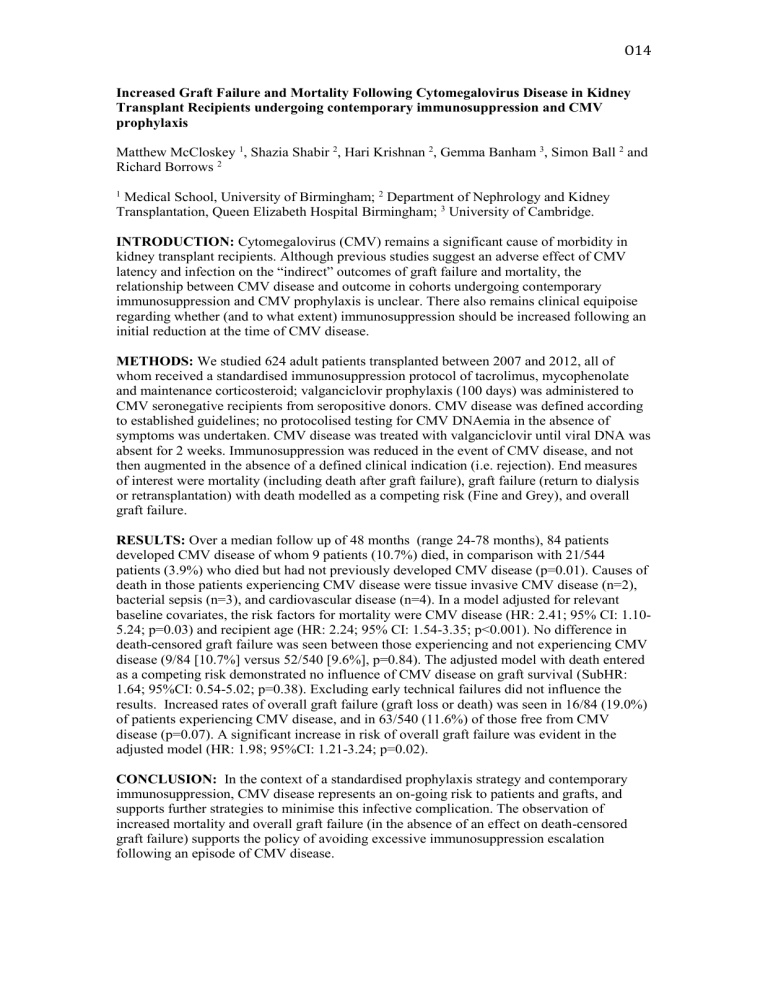
O14
Increased Graft Failure and Mortality Following Cytomegalovirus Disease in Kidney
Transplant Recipients undergoing contemporary immunosuppression and CMV prophylaxis
Matthew McCloskey 1 , Shazia Shabir 2 , Hari Krishnan 2 , Gemma Banham 3 , Simon Ball 2 and
Richard Borrows 2
1 Medical School, University of Birmingham; 2 Department of Nephrology and Kidney
Transplantation, Queen Elizabeth Hospital Birmingham; 3 University of Cambridge.
INTRODUCTION: Cytomegalovirus (CMV) remains a significant cause of morbidity in kidney transplant recipients. Although previous studies suggest an adverse effect of CMV latency and infection on the “indirect” outcomes of graft failure and mortality, the relationship between CMV disease and outcome in cohorts undergoing contemporary immunosuppression and CMV prophylaxis is unclear. There also remains clinical equipoise regarding whether (and to what extent) immunosuppression should be increased following an initial reduction at the time of CMV disease.
METHODS: We studied 624 adult patients transplanted between 2007 and 2012, all of whom received a standardised immunosuppression protocol of tacrolimus, mycophenolate and maintenance corticosteroid; valganciclovir prophylaxis (100 days) was administered to
CMV seronegative recipients from seropositive donors. CMV disease was defined according to established guidelines; no protocolised testing for CMV DNAemia in the absence of symptoms was undertaken. CMV disease was treated with valganciclovir until viral DNA was absent for 2 weeks. Immunosuppression was reduced in the event of CMV disease, and not then augmented in the absence of a defined clinical indication (i.e. rejection). End measures of interest were mortality (including death after graft failure), graft failure (return to dialysis or retransplantation) with death modelled as a competing risk (Fine and Grey), and overall graft failure.
RESULTS: Over a median follow up of 48 months (range 24-78 months), 84 patients developed CMV disease of whom 9 patients (10.7%) died, in comparison with 21/544 patients (3.9%) who died but had not previously developed CMV disease (p=0.01). Causes of death in those patients experiencing CMV disease were tissue invasive CMV disease (n=2), bacterial sepsis (n=3), and cardiovascular disease (n=4). In a model adjusted for relevant baseline covariates, the risk factors for mortality were CMV disease (HR: 2.41; 95% CI: 1.10-
5.24; p=0.03) and recipient age (HR: 2.24; 95% CI: 1.54-3.35; p<0.001). No difference in death-censored graft failure was seen between those experiencing and not experiencing CMV disease (9/84 [10.7%] versus 52/540 [9.6%], p=0.84). The adjusted model with death entered as a competing risk demonstrated no influence of CMV disease on graft survival (SubHR:
1.64; 95%CI: 0.54-5.02; p=0.38). Excluding early technical failures did not influence the results. Increased rates of overall graft failure (graft loss or death) was seen in 16/84 (19.0%) of patients experiencing CMV disease, and in 63/540 (11.6%) of those free from CMV disease (p=0.07). A significant increase in risk of overall graft failure was evident in the adjusted model (HR: 1.98; 95%CI: 1.21-3.24; p=0.02).
CONCLUSION: In the context of a standardised prophylaxis strategy and contemporary immunosuppression, CMV disease represents an on-going risk to patients and grafts, and supports further strategies to minimise this infective complication. The observation of increased mortality and overall graft failure (in the absence of an effect on death-censored graft failure) supports the policy of avoiding excessive immunosuppression escalation following an episode of CMV disease.
